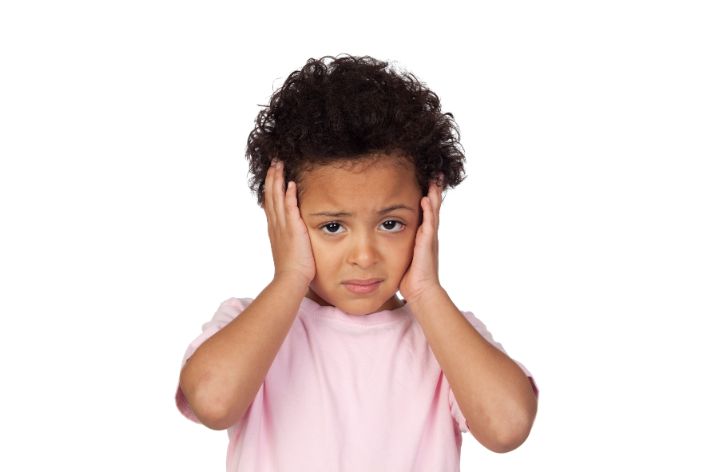Introduction
Physical activity is an essential aspect of a child’s growth and development. It involves any movement that makes their body work, and it should be an integral part of their daily routine.
But, with the rise of technology and sedentary lifestyles, children are becoming increasingly inactive, which poses a threat to their overall well-being.
Importance of Physical Activity in Kids
Physical activity is vital for children’s physical, social, and emotional development. It promotes bone and muscle growth, improves heart and lung health, enhances coordination, and boosts self-esteem. Also, it provides an opportunity for kids to socialize with peers and develop teamwork skills.
Purpose of the Blog Post
This blog post aims to encourage parents and caregivers to promote physical activity among their children. It will explore the importance of physical activity in kids, the benefits they can gain from it, and some simple ways to incorporate it into their daily routine. By the end of this post, parents will understand the significance of physical activity in their child’s life and how they can help them lead a healthy and active lifestyle.
Benefits of Physical Activity
Physical Health Benefits
- Regular physical activity decreases the risk of health conditions, such as obesity, heart disease, and diabetes.
- Physical activity improves coordination and motor skills, which are essential for children’s growth and development.
- Adequate physical activity improves the quality of sleep, allowing children to have a restful and rejuvenating sleep.
Mental Health Benefits
- Physical activity promotes positive mood and self-esteem, which are important for children’s emotional well-being.
- Physical activity decreases stress and anxiety, allowing children to cope with daily challenges in a healthy way.
- Physical activity improves cognitive function, which is essential for academic success and overall intellectual development.
Regular physical activity plays a crucial role in maintaining optimal physical and mental health in children. It offers numerous benefits, including reducing the risk of health conditions like obesity, heart disease, and diabetes.
In today’s sedentary society, where children spend excessive time on screens, encouraging physical activity becomes even more important.
Physical activity improves coordination, motor skills, and overall growth and development in children.
In addition to physical health benefits, it promotes positive mood, self-esteem, and emotional well-being.
Children who engage in physical activity develop better coping abilities and have improved cognitive function.
Studies show that physical activity enhances sleep quality, vital for children’s overall health.
Moreover, it decreases stress and anxiety, fostering better mental health outcomes and effective stress management.
In a nutshell, physical activity offers numerous benefits for children’s physical and mental health. Prioritizing regular physical activity is crucial for their overall well-being.
Read: The Significance of Regular Check-ups for Children
Challenges Encountered in Encouraging Physical Activity
Encouraging physical activity in kids is important to improve their health and overall well-being. However, despite the benefits, many parents encounter challenges in getting their children to be more active.
Here are some of the common challenges:
Technology Overuse
- Kids are spending more time watching TV, playing video games or on mobile devices.
- Technology overuse can lead to a sedentary lifestyle which contributes to weight gain and other health problems.
- Parents need to limit screen time and encourage outdoor play or other physical activities to counterbalance sedentary behavior.
Safety Concerns
- Parents are concerned about their child’s safety while playing outside.
- They worry about injuries, accidents, and crime in their neighborhood.
- To address safety concerns, parents can encourage outdoor play in their backyard, or in a supervised and safe environment, such as school, parks, or community centers.
Lack of Interest or Motivation
- Some kids lack interest or motivation in physical activities.
- They may prefer passive activities, such as reading, drawing, or music.
- Parents can help spark their child’s interest by trying different activities that align with the child’s interest or enrolling them in a sport or active class with their friends.
- Parents should also lead by example and be active themselves to motivate their children.
Time Constraints
- Parents often have busy schedules, leaving little time for physical activity with their children.
- They may prioritize work, household chores, or other daily tasks over physical activity time.
- To overcome time constraints, parents can integrate physical activity into their daily routine, such as walking or biking to school, doing yard work, or taking family walks after dinner. Small bits of activity regularly can add up.
Financial Constraints
- The cost of sporting equipment, gym memberships, or extracurricular activities can be a barrier for some families to promote physical activity.
- Instead, parents can encourage low-cost or free activities, such as walking, hiking, cycling, or playing outside with friends. Some local communities offer free events such as Family Fun Runs or reduced fee sports programs for low-income families which parents may look into.
Encouraging physical activity in children may seem like a challenge, but with persistent planning and creativity, it is feasible to overcome these challenges. Parents’ support and positive interactions with children can encourage a healthy, active lifestyle as they grow with benefits that extend into adulthood.
Parenting Made Just for You
Get personalized Parenting Solutions tailored to your child’s needs. Transform your parenting journey with expert guidance in 1-3 days.
Get StartedRead: Impact of Climate Change on Child Health in Nigeria

Strategies for Encouraging Physical Activity
As parents, it is our responsibility to encourage our children to be physically active. Regular physical activity not only helps to keep our children healthy and fit but also stimulates their overall development. In this section, we’ll discuss effective strategies for promoting physical activity in our kids.
Setting a Good Example
Children learn by example, and if our children observe us leading an active lifestyle, they are more likely to follow suit. As parents, we should make sure that we engage in physical activities daily.
Making It Fun and Engaging
- Creative Activities and Games: Children often lose interest in an activity if they find it boring and uninteresting. Hence, we should come up with ways to make physical activities more fun and exciting for our children. One way to achieve this is through creative activities and games.
- Family and Friend Involvement: Physical activities become more enjoyable when we engage in them with family and friends. We should consider doing activities that involve the entire family, such as hiking, cycling, or playing a game of basketball.
- Goal Setting and Rewards: Children are goal-oriented, and if we set achievable physical activity goals for our children, it can motivate them to engage in physical activities. We can also offer rewards for achieving these goals, such as a weekend trip, their favorite snack, or a new toy.
Incorporating It into Daily Routine
- Active Transportation: We can encourage our children to engage in physical activities daily by making it part of their routine. Encourage your children to ride a bike or walk to school, participate in after-school activities, or engage in fun activities in the park or playground before heading home.
- Household Chores: We can also make household chores a fun activity for our children. We can turn on some music and clean the house together or create a challenge for them to clean up their room quickly.
- Outdoor Time: Outdoor activities are not only good for our children’s physical well-being but also for their mental and emotional health. We can encourage them to go outside and play, ride a bike, play tag, or engage in any outdoor activity they find enjoyable.
Utilizing Community Resources and Programs
- Parks and Recreation Centers: Most communities have parks and recreation centers that offer free or low-cost activities for children. We can take advantage of these facilities to encourage our children to engage in physical activities.
- Youth Sports Leagues: If our children are interested in sports, we can enroll them in a youth sports league. These programs offer a structured environment where children can learn and develop their skills while engaging in physical activities.
- Volunteer Opportunities: We can also encourage our children to participate in volunteer activities that involve physical activities. They can engage in community cleanups, participate in charity walks or runs, or assist with gardening and landscaping projects.
Encouraging physical activity in our children can be challenging, but it’s essential for their overall health and well-being. By setting a good example, making it fun and engaging, incorporating it into their daily routine, and utilizing community resources and programs, we can encourage our children to develop a love for physical activities that will last a lifetime.
Read: Guidelines on Hygiene Practices for Child Health
Conclusion
Recap of Benefits and Challenges
In today’s digital age, parents face many challenges in encouraging physical activity in their children. However, the benefits of regular physical activity, such as improved physical health, cognitive function, and mood, make it well worth the effort.
Children who participate in regular physical activity have a better chance of developing healthy habits that will carry into adulthood. It is important to provide opportunities for physical activity in a safe and enjoyable environment, and to be a positive role model for your children.
Final Thoughts and Encouragement
Remember, physical activity is not just about organized sports – it can be as simple as a family bike ride, a game of tag, or a dance party in the living room. Make physical activity a part of your family’s daily routine, and celebrate your children’s achievements and milestones along the way.
Encourage your children to try new activities and find what they enjoy. Be patient and supportive as they learn new skills and develop their physical abilities. By promoting a positive attitude towards physical activity, children are more likely to continue to be active throughout their lives.
Invitation for Discussion and Feedback
We hope this blog section has provided you with useful information and tips for encouraging physical activity in your children. We would love to hear from you – what are some of the challenges you have faced in getting your children to be more physically active? What activities do your children enjoy the most? Please share your thoughts and feedback in the comments below.




